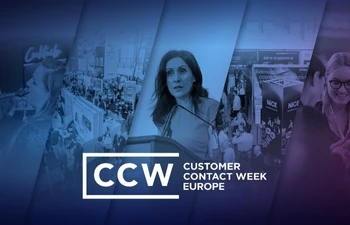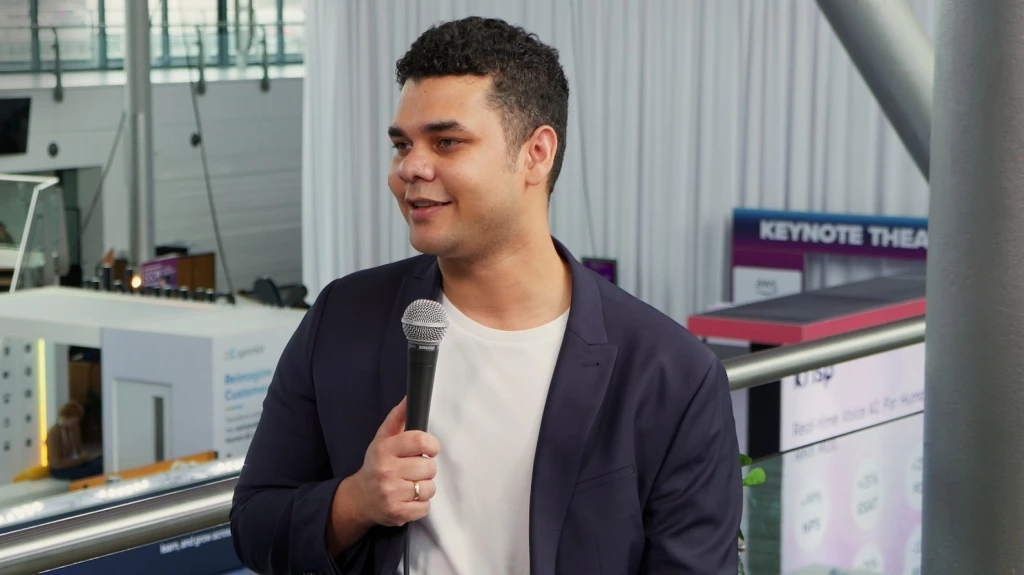How Leading Brands Deliver Customer Service Excellence
Discover how Apple, Adidas, and Sanofi are using digital tools to deliver customer service excellence.
Add bookmark
Technology has redefined customer service excellence, transforming how businesses deliver support and meet rising customer expectations. Digital tools can — and should — be used to help businesses adapt to these changing demands. However it’s equally important to ensure your use of tech provides real value. Thoughtful implementation means that tools enhance the customer experience, rather than complicate it.
Here we explore the tools and best practices that are driving customer service excellence in the digital age, and how leading brands are leveraging these to build lasting customer loyalty.
The digital tools and trends driving customer service excellence
AI-powered chatbots that better manage customer queries
It will come as little surprise that artificial intelligence (AI) features prominently on this list. In particular, its use to power chatbots and virtual assistants, as they have the capability to manage large volumes of queries simultaneously, offering 24/7 support and reduced wait times. More complex queries can be referred to human agents, but simple questions can be resolved quickly and efficiently by AI, eliminating long waits over the phone.
Audio equipment manufacturer Sonos offers a great example of deploying AI chatbots to resolve customer queries efficiently. During the COVID-19 pandemic, faced with the challenge of having to close its physical stores, the company pivoted to an ecommerce platform to sell its products. Interactive 24/7 chatbots solved 24 percent of customer enquiries instantly, agent productivity significantly improved, and ultimately, this led to an increase in revenue.
Omnichannel strategies that meet customer demands
Increasingly, customers expect seamless experiences across different channels, such as chat, email, phone and social media. Put yourself in the mind of the customer — having to repeat the nature of your query multiple times can become irksome, to say the least.
Additionally, preferences may vary across demographics and regions, so larger companies operating in multiple countries may find that while WhatsApp is the preferred method of communication in Latin America, customers in the UK prefer getting in touch via email.
This was the scenario Scandinavian Airlines found itself in, with customers in Denmark and Sweden having very different preferences despite their proximity. Implementing a customer-centric strategy driven by AI that included the development of a mobile app and self-service options has enabled them to cater to all regions, and grow their market reach.
Self-service portals that solve customer queries
In recent years, numerous studies have shown that customers want self-service options, showing a rise in the preference for solving issues on their own rather than contacting customer support. A self-service portal should incorporate tools that guide customers to resolve technical problems step by step and have AI-powered search capabilities to help customers quickly locate relevant resources.
Some companies, like Apple, have a forum where users can share solutions and experiences. Through the Apple Support Community pages, users exchange tips and provide technical support, earning points for their contributions. This not only creates a valuable knowledge hub, but also fosters trust and a strong sense of community among Apple users.
Personalisation that creates memorable experiences
Personalisation plays a vital role in achieving customer service excellence by ensuring every interaction feels tailored and relevant. With access to vast amounts of customer data, companies can personalise their support and create tailored experiences such as personalised greetings and product recommendations. If delivering exceptional customer experiences is a priority for your business, this is important – as customers are far more likely to have a memorable experience and recommend your company to others with a service addressed specifically to them, rather than a generic one.
CRM systems (see below) that track purchase history, preferences, and past interactions can help with this, by ensuring agents have real-time access to this information so they can tailor conversations.
CRM tools that convert customer data into real value
Customer relationship management (CRM) systems that house all your customer data can be an invaluable tool when it comes to delivering customer service excellence.
Andrew Land, the CRM Director at powerhouse Condé Nast, explains that in the world of publishing, identifying the same person across different platforms and channels is a challenge, since each one often assigns its own “identifier”. However, a CRM system can simplify this: “With stronger identity resolution, we can tailor our messaging more effectively and deliver more refined, deeper, customer experiences. And while on the surface we’re making our audience smaller, what we now see is a truer picture – correcting for repeat visits by the same users across multiple devices… From a commercial perspective, it’s a huge step forward. We have a far more defined picture of our audience, which means we can offer advertisers more precise targeting. Whether it’s high-value users or specific cohorts visiting certain pages, we’re now better equipped to identify and reach them effectively.”
Best practices for delivering customer service excellence in the digital era
Technology like AI and automation should enhance, and not replace human interaction. Striking the right balance is essential, so bear these tips in mind:
1. Balance bots with humans
Automated systems like AI chatbots and self-service tools can improve efficiency, but human connection remains critical. Businesses should ensure customers can easily escalate issues to a live agent, especially for complex or sensitive matters. Remember that empathy and emotional intelligence cannot be automated.
2. Align your use of tech with business goals
A very common issue is the adoption of new tools simply for the sake of novelty, rather than addressing a genuine need. A good example was Shell’s attempt to launch a chatbot in the UK in 2021. Pierluigi Bosco, Shell’s Global B2C Customer Experience Lead, explains how the company felt it "should" have one, without fully considering customer needs. As a result, the chatbot performed poorly and had to be decommissioned after a few months.
The key takeaway is that innovation and technology should start with clearly understanding the business problem and the customer experience you want to deliver, and only then choosing the appropriate technology to support that goal. Before adopting new tech it’s important to map out what it should do, with clear KPIs linked to customer service, whether CSAT, NPS or other metrics, and regularly review how it’s performing. If your business objectives include ensuring that service excellence drives both customer loyalty and company growth, the tech tools you implement should be driving this.
3. Provide continuous training
Customer support staff are the face of your business, and technologies evolve rapidly. Build on their existing skillset with regular training that ensures support teams stay updated on new tools, communication techniques, and problem-solving approaches, maintaining service excellence even as the digital landscape shifts.
It is a well-known fact that high employee turnover is detrimental to a business's reputation and financial stability. Providing opportunities for career development and growth, including educational programmes, mentoring, and leadership training like in the case of American airline Delta leads to high-quality customer service. It is in no small part thanks to empowering its staff that Delta has been ranked among the top 100 Best Places to Work by Glassdoor and Fortune.
4. Keeping reviewing, adapting and improving
As well as providing regular training to staff, it’s important to keep reviewing internal processes, build on what is working and remove what isn’t. Collect and analyse customer feedback, including information on tech tools. Use this to identify pain points, track service quality and make real-time improvements.
5. Prioritise data privacy
Tech tools need data, and companies must be honest with their customers about how they use their information. Make sure you’re complying with regulations like GDPR, and have a clear strategy in place for how data is collected and used.
It is also good practice to publish your data strategy to keep your customers informed. Explaining how data improves their experience, and giving your customers control over their data preferences, will foster trust in your brand.
Two more great examples of tech enabling customer service excellence
Adidas: The local-acting chatbot for a global company
Is it possible for a huge global brand to deliver localised service? If we look to Adidas, it certainly is. Stijn Bannier, Global Digital Product Director, explains that while its product strategy is global, everything the company builds takes regional nuances into account. “In the realm of e-commerce, this might mean working with region-specific delivery carriers, offering locally preferred payment methods, or adapting to various legal and policy frameworks,” he says.
“On the customer service side, it’s about tailoring to local communication preferences, whether that’s through Facebook Messenger, WhatsApp, KakaoTalk, or other regionally popular channels. There are many different distinctions that we must embrace.”
It has achieved this by working with best-in-class vendors across different markets. “A perfect illustration of this is the launch of our chatbot: It features a low-code, no-code administration panel, enabling our product and design teams to manage it and condition it independently without developing everything from scratch,” he adds. “Through targeted training they each developed fluency in the system – they learnt to identify customer intents and refine response strategies and adjust language for local relevance – all minus the need to build entirely new flows.”
Sanofi: Building a digital-first culture
Pharmaceutical giant Sanofi has the ambition to become powered by AI at scale, but how can this be embedded across a company with more than 90,000 employees, and operations in 100 countries? “That means empowering our teams with the technologies they need to mine data and extract meaningful insights from it,” says Joanne Kennedy, who is Chief of Staff to the Executive Vice President of R&D.
“Our approach is to use digital technology and AI in everything we do – well beyond just R&D – it's embraced by every department, and we have different initiatives to tackle it. We’ve labelled some of our more specific projects “snackable AI” – for example, we can look at data across the entire company to understand company performance. In that same app, we can better visualise our clinical trials, and AI provides insights into how we might better manage those trials.”
Key to this is recognising that embracing new tech like AI will present a challenge, and providing mentoring, training, and exposure. Kennedy recommends working in an agile manner, having a clear north star, and bringing in new talent once a clear vision is in place.
































